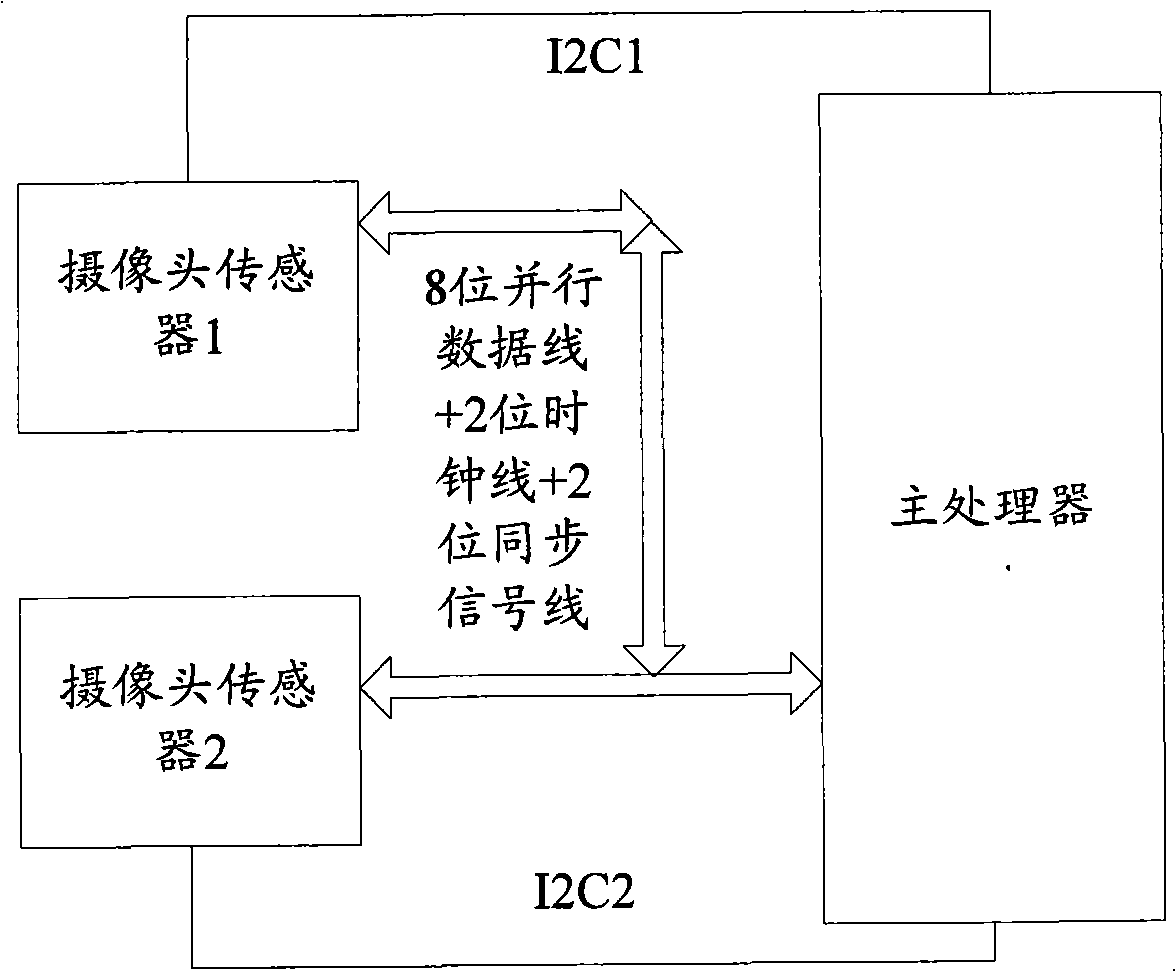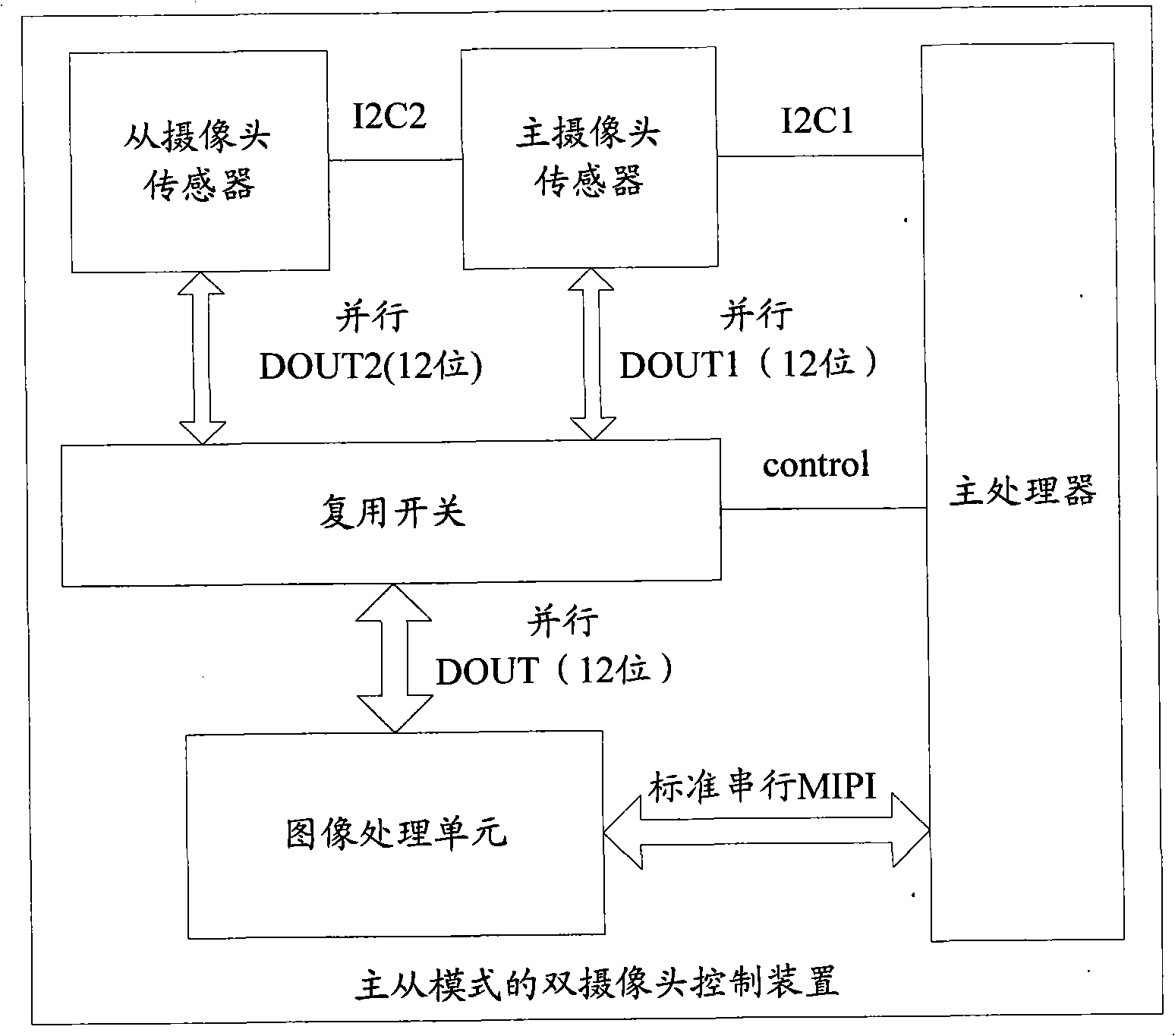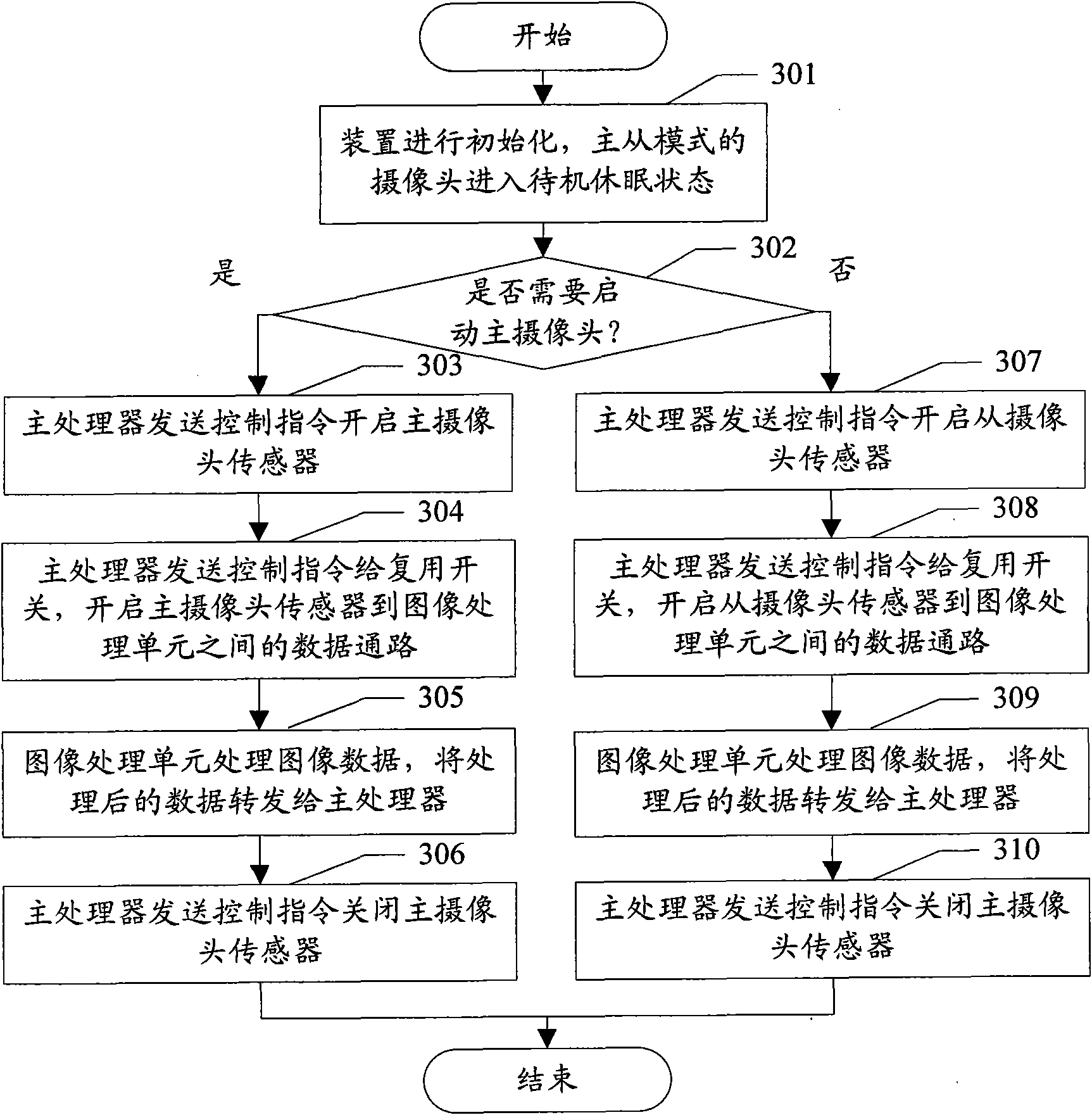Method and device for controlling two cameras in master/slave mode in wireless terminal
A master-camera and dual-camera technology, applied in the control field of dual-camera in master-slave mode, can solve the problems of not improving the wiring space, and the improvement is not obvious, and achieve the effect of saving wiring space, saving resources, and avoiding mutual interference.
- Summary
- Abstract
- Description
- Claims
- Application Information
AI Technical Summary
Problems solved by technology
Method used
Image
Examples
Embodiment Construction
[0026] The basic idea of the present invention is: two camera sensors are connected by bridging, so that the two camera sensors are connected into a master-slave mode, their data signals are separated by a multiplexing switch, and different channels are opened according to the needs of the processor, so as to avoid When the user is using one of the cameras, the data signal of the other camera sensor is electrically connected to the main processor, so as to avoid mutual interference and reduce the occupation of main processor resources.
[0027] In order to make the object, technical solution and advantages of the present invention clearer, the present invention will be further described in detail by citing the following embodiments and referring to the accompanying drawings.
[0028] figure 2 It is a structural block diagram of the master-slave mode dual-camera processing device in the wireless terminal of the present invention. The master-slave mode dual-camera processing ...
PUM
 Login to View More
Login to View More Abstract
Description
Claims
Application Information
 Login to View More
Login to View More - R&D
- Intellectual Property
- Life Sciences
- Materials
- Tech Scout
- Unparalleled Data Quality
- Higher Quality Content
- 60% Fewer Hallucinations
Browse by: Latest US Patents, China's latest patents, Technical Efficacy Thesaurus, Application Domain, Technology Topic, Popular Technical Reports.
© 2025 PatSnap. All rights reserved.Legal|Privacy policy|Modern Slavery Act Transparency Statement|Sitemap|About US| Contact US: help@patsnap.com



